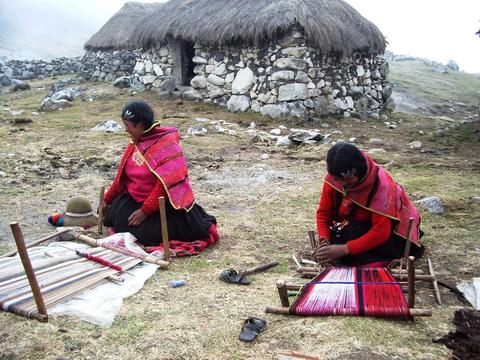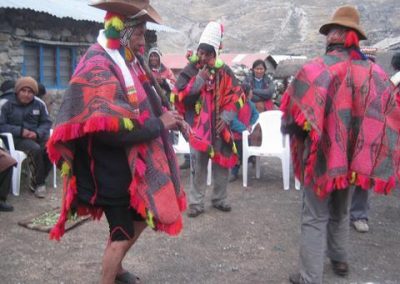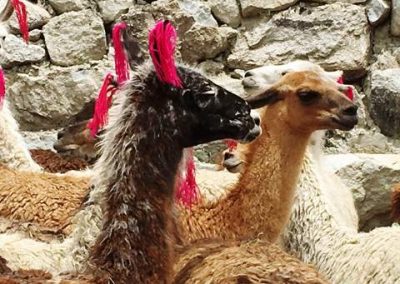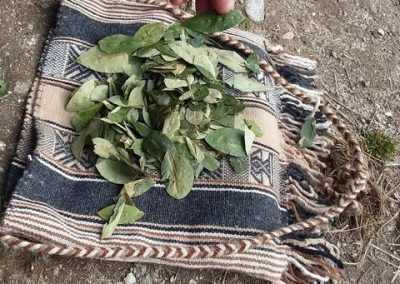Yanaruma Village of Hapu Q’ero Nation

Weavers in Yanaruma (yaw-naw-roo-muh) live in the highest village of all five of the Q’ero (care-roh) Nations. Weavers depend on their animals to spin alpaca fiber and sheep’s wool using a drop spindle to make yarns clothing, blankets, bags, belts, ropes, and other utilitarian items. They herd their animals across the steep mountainsides to feed on naturally growing grasses. Sometimes a teen will sleep out with the herd animals when grazing too far from home to return to the safety of the stone corral. The youth endures a cold night, exposed to rain, wind or snow with just a blanket for warmth and cold potatoes to fill his or her stomach. The child can only throw rocks to ward off any pumas (mountain lions) threatening the herd.
At 15,600 feet, Yanaruma village is the coldest in the region. Snow is common in the months of April through October. The rainy season of October through April brings thick mud and challenges to herding their llamas and alpacas.
Every year mountain lions (pumas) kill some of the sacred llamas in this area, which is a significant economic loss to a family. If someone happens to wake to hear an attack, they will yell and throw rocks at the predator. But the pumas always return.
The children of Yanaruma and Lekepata (lay-kay-pah-tuh) villages attend preschool starting at age 3, then primary school at age 6. Heart Walk Foundation funded the construction and teachers for both schools and continues to pay the salary for one. Children from tiny Lekepata village hike about 5 miles each way to attend school six days a week in Yanaruma.
Yanaruma sits on the top of a ridge overlooking several shallow lakes that Heart Walk Foundation stocked with fingerling trout. The people can now consume fish to supplement their subsistence on potatoes and tubers that grow in the cold highlands of Q’eros.
The people of Yanaruma have remained traditional in their spiritual practices and way of life, in spite of past pressures from other Hapu people to adopt more modern clothing, customs, and beliefs. They have ceremonies in a circular temple, which reflects the syncretic features of a minimalist Catholic identity woven into their fundamental Andean cosmovision.
About 7 families remain in Yanaruma after a number migrated down the mountain for perceived opportunities offered by Peruvian town life – primarily manual labor for cash income. We anticipate an end to the migration away with the completion of the first high school in the region.
Your purchase of textiles, watana bead ties, and alpaca ropes helps the remaining families survive in their beautiful ancestral homelands.
Learn more about Q’ero weaving here.





